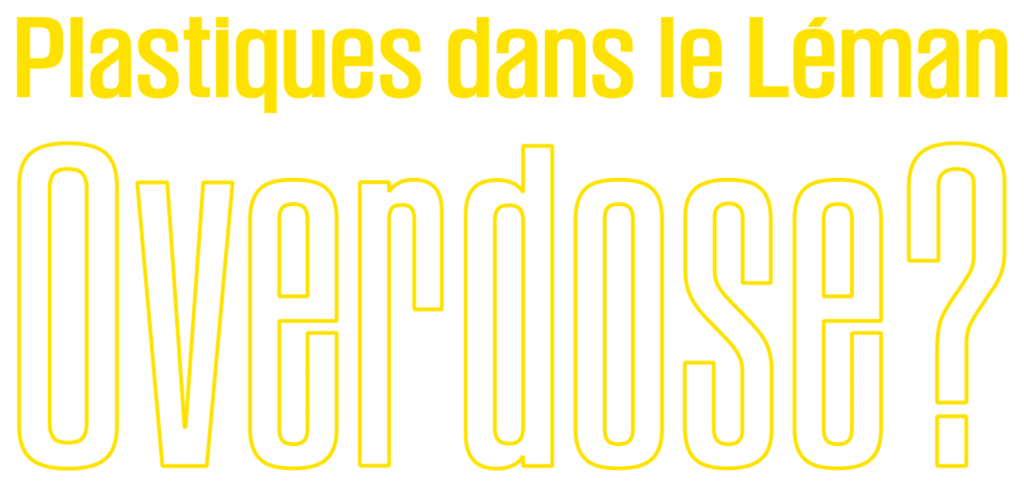
Public conference on 18 March 2025
at the Campus Biotech in Geneva
In Switzerland, plastic consumption exceeds 1 million tonnes a year. According to available data from studies and extrapolations for Switzerland, nearly 14,000 tonnes of macroplastics and microplastics are disseminated in nature every year, discharged into soils, surface waters and their sediments, escaping retention mechanisms and elimination. This waste breaks down into invisible particles that insidiously find their way everywhere. The problem has thus spread around the world and become one of the greatest environmental problems that humanity has created and must face up to.
Lake Geneva is no exception to this invasion of plastic, and it is against this backdrop that the ASL has been tackling the issue since 2014. It's a battle that it has been waging for 10 years now, with concrete actions on the ground such as Net'Léman - the great lake clean-upparticipatory science initiatives such as theApp Net'Léman or scientific studies such as Pla'stock or Léman Plastic Action.
The study Pla'stock conducted on 25 beaches on Lake Geneva reveals an average of 7,600 microplastics per m2 including 60% of synthetic textile fibres released by clothes during washing or normal wear and tear. In terms of macroplastics, the average concentration was 3.4 plastic elements per linear metre of beach. Half of the elements collected were unidentified fragments. The four most frequently identified elements are cigarette butts, food packaging, pellets (industrial plastic granules) and cotton buds.
The study Léman Plastic Actioncompleted in 2024, is based on a modelling approach and shows that 100 tonnes of plastic enter the lake every year. It also points to other factors not detected in the study Pla'stockThese include tyre dust, paint from facades and roads, and residues from synthetic sports surfaces.
In order to make as many people as possible aware of this growing threat to the health of ecosystems and humans, the ASL, in partnership with the University of Geneva, organised a public conference on 18 March 2025 at the Campus Biotech in Geneva, at which a number of specialists in the field gave their views. The evening provided an opportunity to review the current state of research and existing data in the Lake Geneva and Swiss regions, to discuss the most important sources, and to propose solutions to reduce this insidious pollution.
WELCOME ADDRESS
Alfonso GOMEZ, Administrative Councillor, City of Geneva
Pascal MULATTIERI, Chairman of the ASL
45 YEARS OF SERVICE TO LEMAN
Suzanne MADER-FEIGENWINTER, Association pour la sauvegarde du Léman -ASL
ARE THE BEACHES OF LAKE GENEVA REALLY AS POLLUTED AS THOSE OF THE OCEANS?
From macro to nano plastic ... and then what?
Serge STOLL, University of Geneva - UNIGE
Alexis POCHELON, Association pour la sauvegarde du Léman - ASL
PLASTIC EVERYWHERE, HOW DOES IT TRAVEL?
From the summits to the rivers, what are the transfer mechanisms?
David GATEUILLE, Savoie Mont Blanc University
HUMAN AND ENVIRONMENTAL HEALTH, WHAT DO WE KNOW?
Health impacts of microplastics
Florian BREIDER, École polytechnique fédérale de Lausanne - EPFL
TYRE DUST, MAJOR POLLUTION, WHAT CAN YOU DO?
Tyres, one of the biggest plastic pollutants in the aquatic environment
Benoît FERRARI, Ecotox Centre
THE SOLUTIONS EXIST, LET'S KEEP HOPING!
Concrete actions and solutions for the private and public sectors
Julien BOUCHER, EA - Earth Action
Adrien BONNY, Association pour la sauvegarde du Léman - ASL
Moderated by Sophie ISELIN, science journalist at RTS
Benoît FERRARI, Ecotox Centre
David GATEUILLE, Savoie Mont Blanc University
Florian BREIDER, École polytechnique fédérale de Lausanne - EPFL
Julien BOUCHER, EA - Earth Action
Serge STOLL, University of Geneva - UNIGE
The ASL has been concerned about plastic pollution of the water for several years. It has commissioned Dr Julien Boucher to assess the lake's plastic load.
This study, presented in the Lake Geneva n° 110 in December 2018, shows that Lake Geneva receives more than 50 tonnes of plastic every year, mainly in run-off water.
In response to these alarming findings, the ASL has organised a conference bringing together scientists, administrations and associations to take stock of the knowledge acquired on the subject and to devise projects that could be set up to improve the situation (see Lémaniques n° 117 December 2020).
In 2021 the ASL will launch a study Pla'stock a participatory science project, initiated by CIPEL in collaboration with UNIGE aimed at counting and characterising micro and macroplastics on the beaches of Lake Geneva.
In 2024, the ASL launched the study Léman Plastic ActionA model of the flows and trajectories of plastics entering Lake Geneva.

The Campus Biotech Geneva Foundation and Campus Biotech are not involved in the organisation of this event.